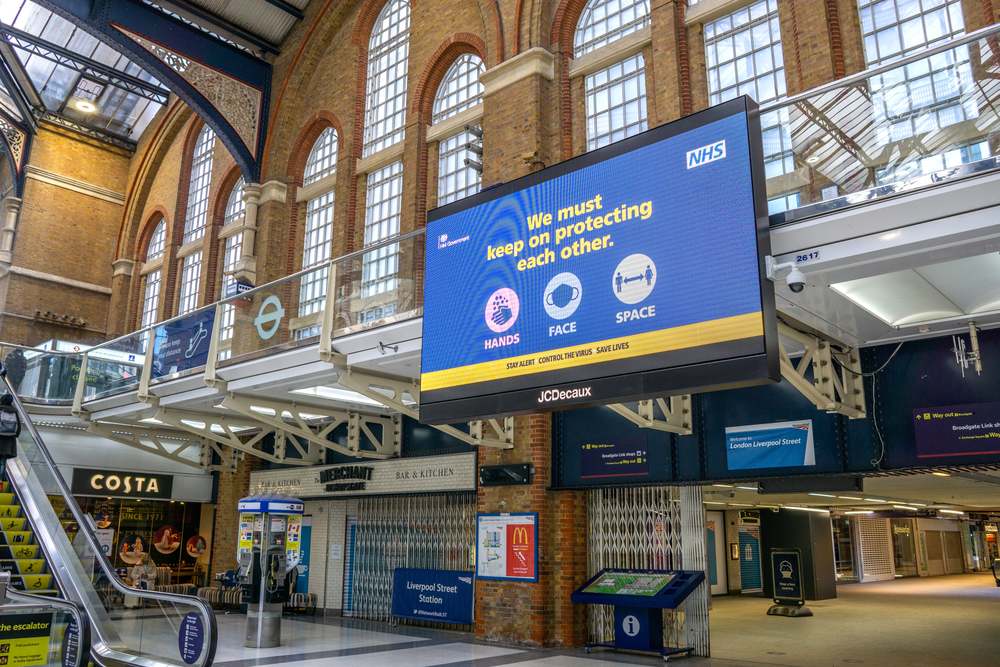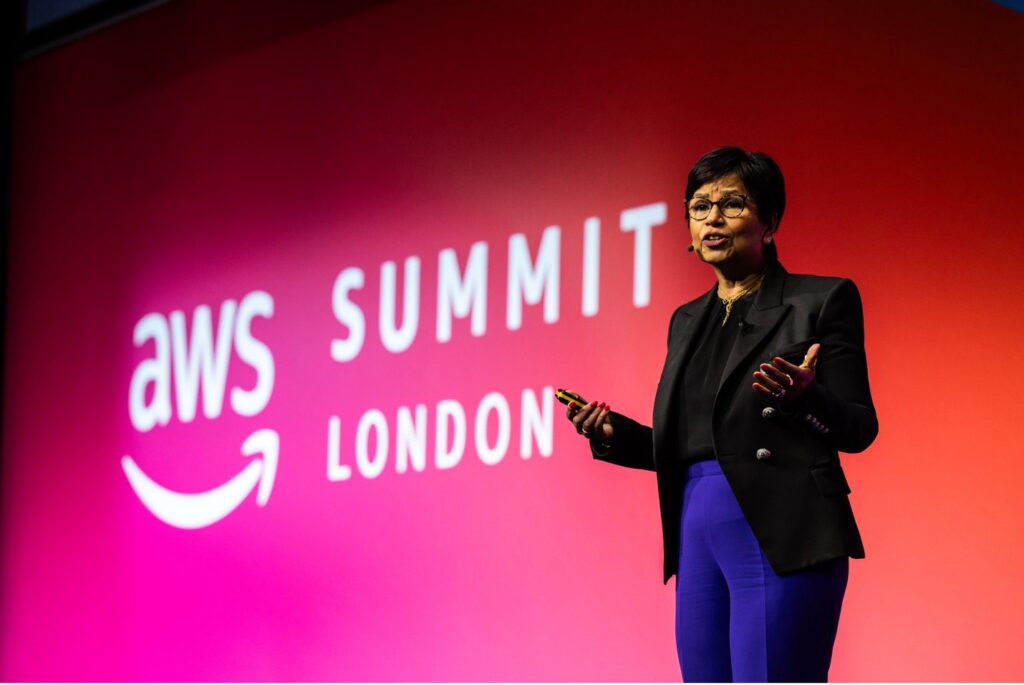Covid-19 is already known as the great disruptor, with the pandemic having changed the way the world works, socializes and travels for the foreseeable future. And with it being a medical crisis, Covid has obviously brought disruption to healthcare, both digital and on the ground, and in ways both major and minor.
Big, new things trialed by the UK’s National Health Service (NHS) on a nationwide scale in the country included the NHS tracking app, set up to collect Covid test results and vaccination details. But arguably the little things reveal the pandemic’s true impact, and the sudden digitization of doctor visits and patient data will have an impact for the rest of this decade and beyond. British residents may remember 2020 for being the year they first started talking to a doctor on the phone about their symptoms, or sending digital photos of skin-level symptoms through to their practice in lieu of an in-person visit.
In other words, Covid-19 brought the NHS another step into the digital age. The groundwork was already there: as of summer last year, NHS Digital has spent around £24.5m on AWS services. But while that figure counts from 2012, it’s still too early to say the public body has shed off enough of its legacy technology a decade on, even after the pandemic. And in this digital age of Covid, legacy tech can pose challenges for any enterprise.
“The NHS, both centrally and at individual provider levels, has made significant improvements on data security and remote access to services,” says Jaco Vermeulen. CTO at digital transformation brand BML Digital, Vermeulen has experience working with the NHS across central, regional and hospital divisions, alongside partnerships such as Guy’s & St Thomas’ NHS Foundation Trust.
“The NHS needs to get credit for having modernized their data practices,” he continues. “However, it has not necessarily done digital transformation where it provides operational benefits and outcomes associated with digital ways of working.
“There are some sporadic exceptions to this, but on the whole, digital transformation has yet to be embraced within the NHS.”
“This is a complex and challenging problem for the NHS, balancing the business case for investment in supporting IT services and providing quality patient care,” agrees Mike Kiersey, CTO of EMEA at iPaaS specialists Boomi.
“Coupled with the technical challenge that the NHS has a vast amount of data, distributed across many different areas of the organization, managed and supported by a variety of providers and contracts, not to mention the most important area of data privacy and data security which is an imperative requirement for personal healthcare records.
“Some of these data silos are estranged and not fully integrated into a cohesive framework approach for the NHS to develop and improve patient experiences and improve quality of care through a joined-up data approach.”
According to Kiersey, there is still a long way to go before the NHS and other public bodies truly shake off legacy technology on an enterprise level.
“The Covid-19 pandemic has starkly illustrated public services’ urgent requirement for accurate, accessible data,” Kiersey tells ERP Today. “However, public bodies continue to be reliant on outdated legacy systems, emphasizing a ‘keeping the lights on’ approach at the expense of modernization initiatives and the increased benefits they can bring.”
According to the CTO, the reason why organizations find themselves in this state is due to the layer upon layers of technological debt that accumulates over time through projects that continually add on elements without removing them further down the line.
“The complexity of middleware, integration, legacy ESB etc is crippling the pace at which organizations can move, coupled with the fact they all need to be patched and managed to mitigate security risks.
“As businesses embark on complex, expensive ERP cloud migration, projects sometimes fail. The top three reasons behind modernization projects failing in the healthcare sector include TCO for modernization and tech integrations.
“Top obstacles businesses in the healthcare sector must watch out for when modernizing include coping with complex hybrid IT, which 42 percent of respondents in life sciences and healthcare sectors recently cited to us as the top issue.
“These need to be addressed ahead of looking at solving legacy data practices.”
For the CTO, the answer lies in Boomi’s stock-in-trade of composable ERP, tech which accommodates for more than one tier of application and data service history being deployed concurrently in the same company IT stack.
“Despite the healthcare sector making good initial decisions in turning to ERP, it still might not have the necessary data programming, tied up in legacy tech, to bring itself into a sustainable future.
“Any replacements made to outdated or inefficient technology could be costly and time-consuming. The solution to that is composable ERP systems, a method to avoid full-on overhaul. They can help organizations deliver business outcomes and adapt to the pace of business change by assembling and combining packaged business capabilities (PCBs).”
Kiersey says a composable healthcare infrastructure will mean the NHS giving up monolithic IT applications such as claims processing systems or the mega-suite of electronic health records (EHRs) that it and other healthcare organizations have invested in and grown accustomed to.
The CTO also believes the healthcare infrastructure is already on its way to becoming composable, such as in its growing adoption of cloud computing along the lines of the NHS/AWS relationship.
“Industry watchers are reporting that healthcare providers and their CIOs are now less reluctant to turn to the cloud, as they recognize advanced approaches to medicine require more than on-premise IT, with the help of SaaS on the side.”
According to Kiersey, Boomi’s own platform has helped American Cancer Society through “better patient care and insight” for its 30,000 patients via a better-connected experience between patients, donors and clinical resources.
The means to update upon legacy tech in healthcare are not hard to find, therefore. But according to Vermeulen at BML Digital, cultural challenges still pose an obstacle to digital transformation.
“The biggest stress is usually cultural,” learns ERP Today. “It can be described as getting the business to understand what needs to change and what the priorities are for a sequence of change.
“The unfortunate reality is that most organizations think of digital transformation as a blob of change to everything at the same time. Correcting this viewpoint is often half the battle – in a healthcare environment, data-driven assessment of pain points and evidence to verify risks and opportunities are critical to inform what the scope and pace of digital transformation should be.
“This data also then provides all stakeholders with a uniform and transparent view of the changes. The big stress is in getting an organization to understand it is about planned business transformation, not just implementing a piece of technology.”
A public or private problem?
This is true of both public and private healthcare bodies, according to Vermeulen. The CTO who, through BML Digital, has worked with the likes of Boots and Bupa, doesn’t see the great public sector/private provider divide as a particular sticking point.
“The challenges of standardizing a healthcare portfolio are more to do with the scope and complexity of services from a specific provider. Remember that some private sector providers are at the scale of some large public sector equivalents, and there are some public sector healthcare providers that are very limited in scope.
“The critical consideration is that all of these providers deal with the same patients and often the same resources are used across private and public sector healthcare. In addition, private health care providers’ biggest revenue and volume of service provision is as subcontracted providers to the NHS.
“Which of course means integration is a massive challenge – it is vital to get data, integration, functions and process right to achieve an interwoven digital way of working.”
Vermeulen though does see “unique” challenges posed by the NHS when compared to private providers.
“The NHS comes with public sector central administration hurdles, as well as a pseudo internal competitive market approach. Typically, the NHS does not take an ‘outside-in’ perspective, ignoring that the patients view the NHS as one single organization and expect to be seen, known and treated consistently.
In Vermeulen’s view, the NHS management and organizational structure forces significant independent initiatives, often resulting in “conflicts and duplication across organizations that are serving the same end customers.”
The CTO though does see some hope on the horizon, pointing to Guy’s & St Thomas’ as a “star example” for modern technology approaches.
“Individual NHS organizations, as well as private sector healthcare providers, are ready for modern ERP approaches, and some have already taken the leap.
“Although,” he adds, “the reality is that most of the non-poster-child NHS organizations are unfortunately stuck with legacy IT. It may be a few years before we reach a ‘tipping point’ of this changing.”




